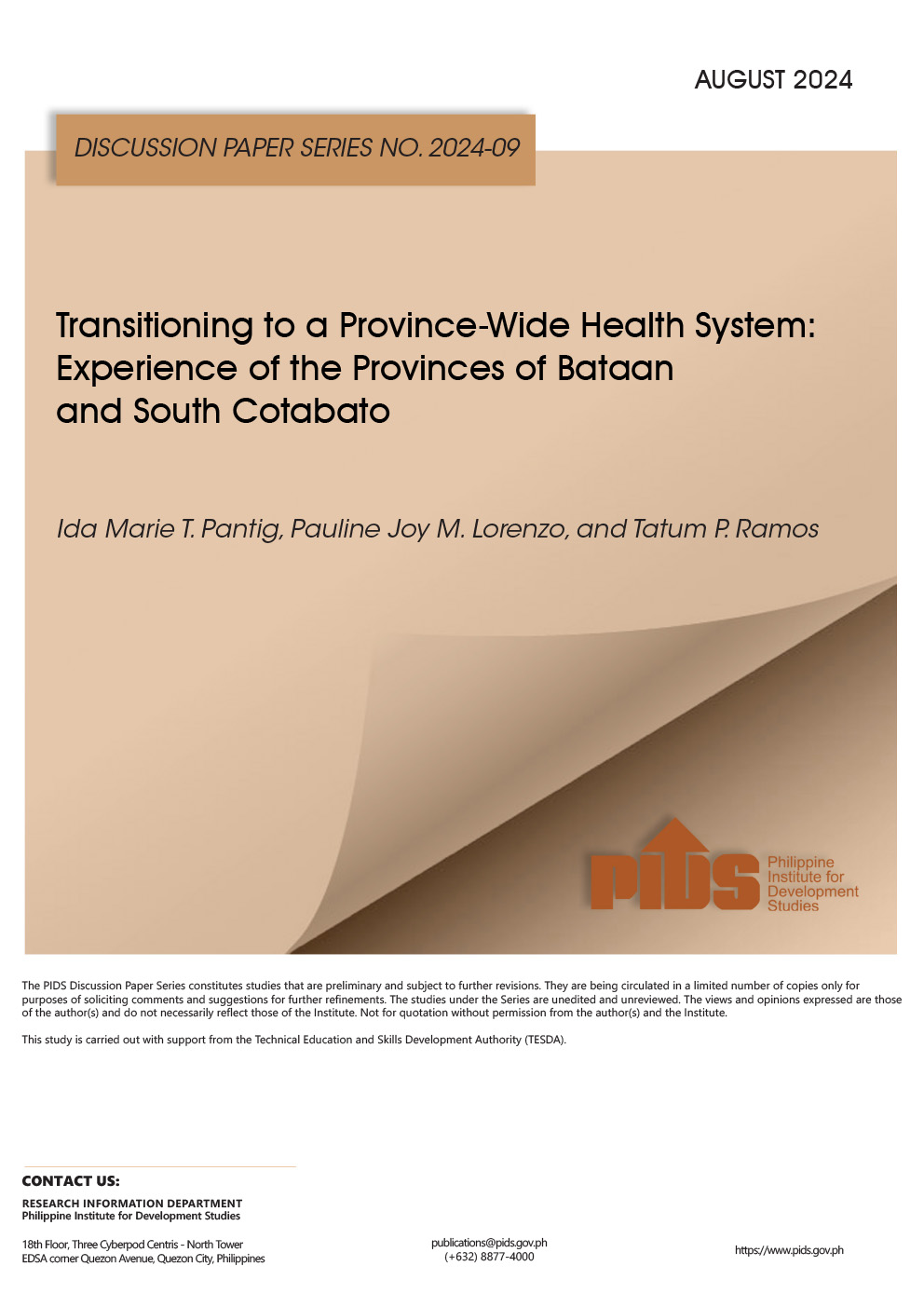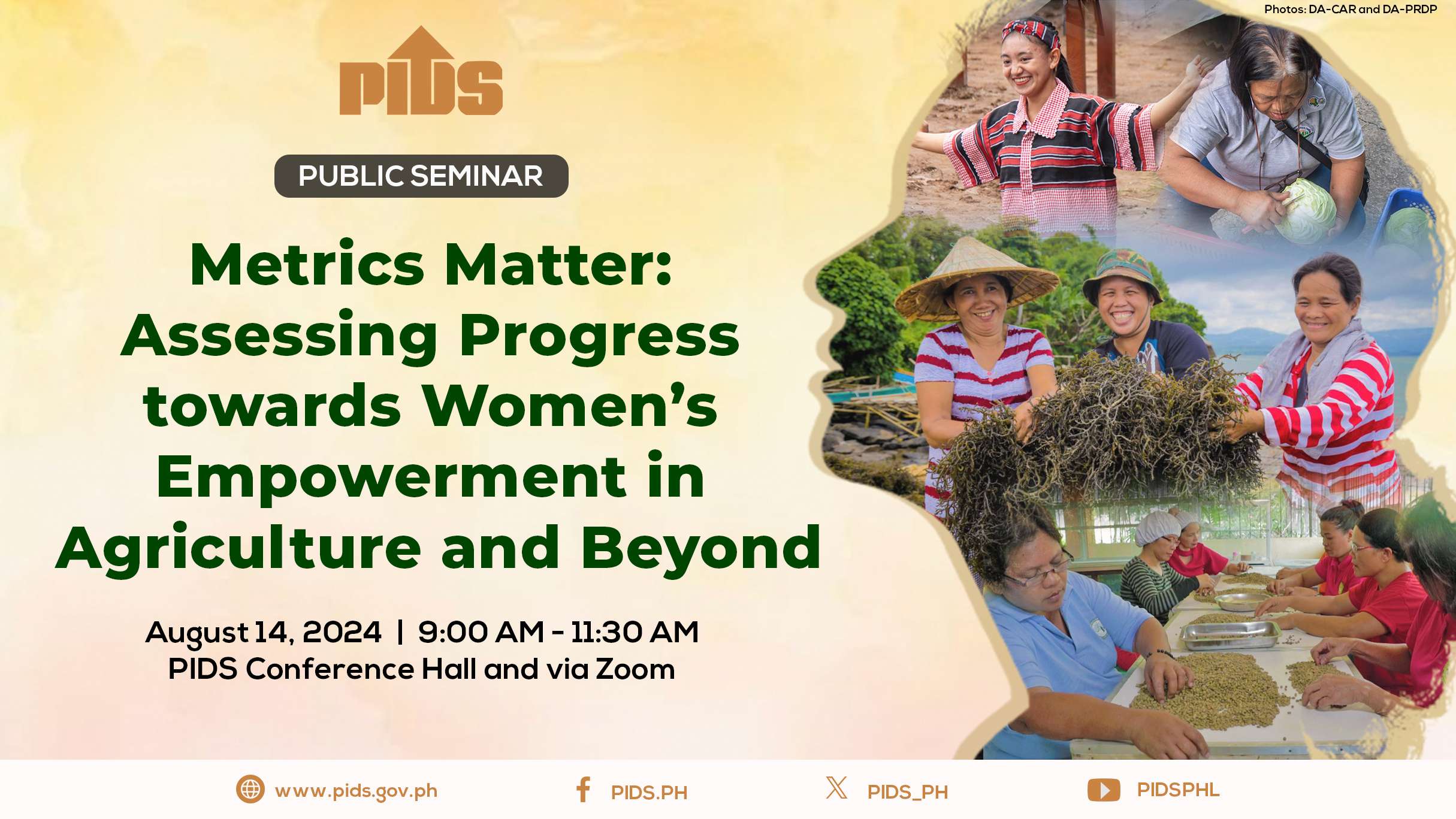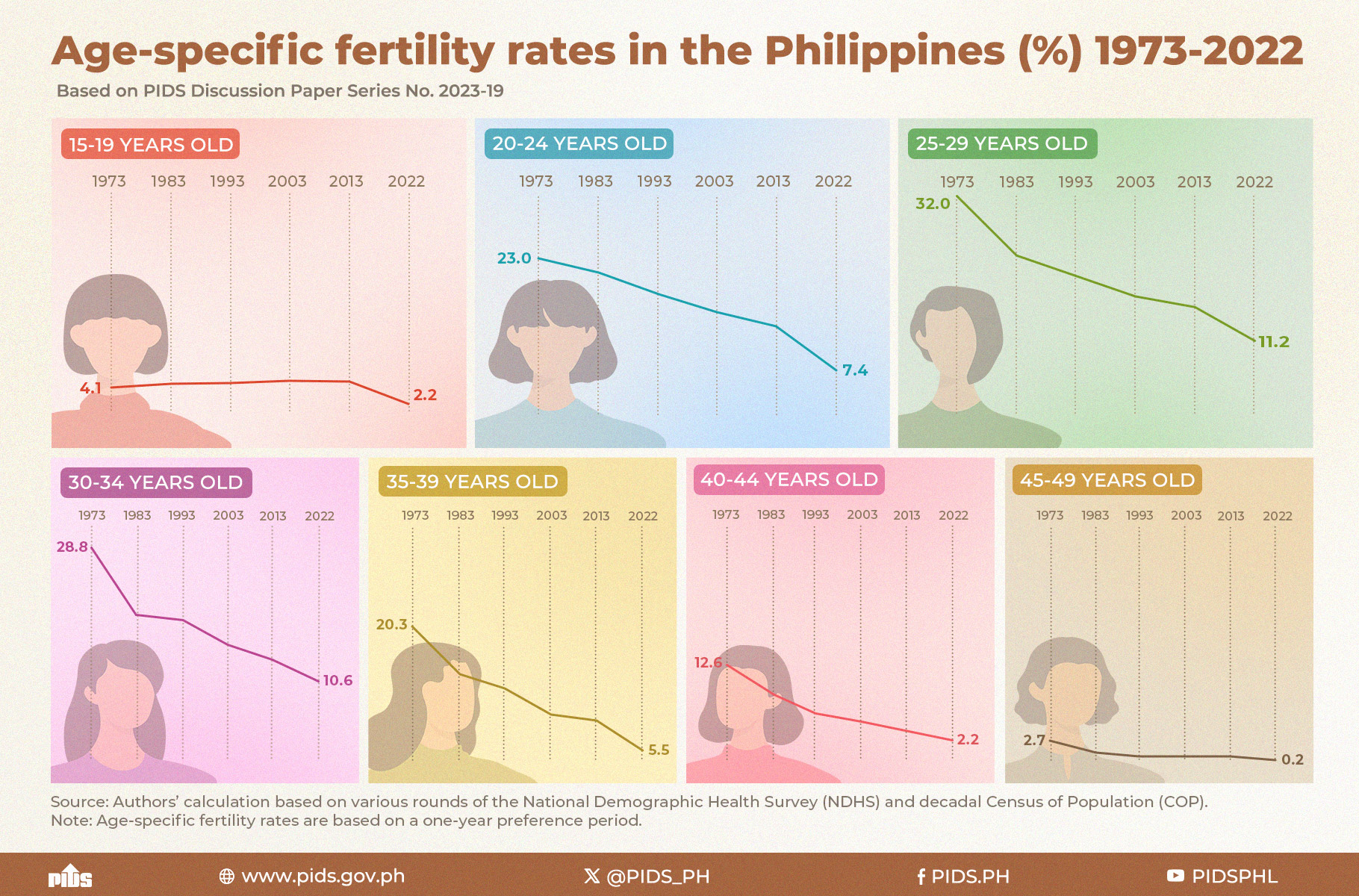I point to two critical challenges, which can gain so much from a well-structured and implemented public-private partnerships (PPPs) environment:
1.) Boosting healthcare: Significantly adding healthcare capacity should be a top priority. We need both “beds” and “heads” — hospitals and healthcare practitioners — if we truly want to future-proof our healthcare system. With around 100,000 beds, our bed-to-population ratio of 1.0 remains under the World Health Organization (WHO) standard of 3.0. To reach a ratio of at least 1.25 by 2025, the country needs to increase its capacity by at least 54,000 beds. This is a massive undertaking that government cannot do alone. If we want to increase hospital bed capacity, we need to attract more private sector investments, through incentives and other mechanisms such as PPP arrangements, so we can entice more private players to be involved.
However, the other half of the challenge is the glaring gap in the country’s pool of doctors, nurses, and allied professionals. For example, we have around 0.4 doctors per 1,000 population, well below the WHO-prescribed standard of 1:1,000. The next generation should be encouraged to pursue training in healthcare-related fields. The government should explore incentivizing universities and medical schools to lower tuition costs and increase class sizes. PPPs can also be harnessed to establish more medical schools and training facilities, further empowering Filipinos all over to take on the call of service as healthcare providers.
Part and parcel to the government’s plan of strengthening Philippine healthcare is the implementation of Universal Health Care (UHC). Private healthcare providers should be encouraged and incentivized to establish primary healthcare facilities, in coordination with LGUs, to support the roll out of UHC. Furthermore, as the private sector continues to innovate with new mechanisms in line with UHC, the government should also be flexible in its regulations, able to adapt and evolve with these new business models. The private sector is eager to support UHC and, like how we dealt with the pandemic, cooperation and collaboration with the government are key if we want to see UHC through.
Finally, PhilHealth plays a vital role. To ensure PhilHealth’s future success and build resilience in the healthcare system against the future unpredictability with the pandemic, there are clear opportunities that should be addressed now, particularly on improving technology and systems for claims processing, fraud detection, and collections and reimbursements. The private sector can help by lending its collective wealth of technical knowledge and experience with global best practices. Should PhilHealth need to outsource certain functions or consult on what are the best strategies as it reforms, the private sector is readily available to help and provide support where needed.
2.) Addressing our learning crisis: The pandemic has aggravated a Learning Crisis that has been creeping upon us for decades but has been highlighted in recent years with our dismal placings in several international assessments of learner competencies, and, most recently, with the World Bank’s staggering data showing us at the bottom of the heap in almost all categories. Using data from PISA, TIMSS, and SEA-PLM (Program for International Student Assessment, Trends in International Mathematics and Science Study, and Southeast Asia Primary Learning Metrics) the World Bank (2021) estimates that 90% of 10-year-olds cannot read a simple story.
There are three areas with great opportunities for a strong Public Private Partnership to make a difference:
A. Improving the voucher system to accelerate school opening and learning recovery: The government has been successfully running large scale education subsidy programs in high school. In SY 2021-22, about a million private junior high students are ESC grantees while in senior high, about a million students are voucher recipients.
The positive impact is clear cut. In August 2020, an ADB study concluded that the programs promote the efficiency of the mixed public-private education system, enable greater choice, empower the parents and the learners, and promote diversity of providers.
But there is much more potential to expand and refine these programs such as (1.) increasing high school slots; (2.) redesigning programs towards the adoption of a universal voucher across eligible grade levels; (3.) adding grades 1-6; (4.) differentiating the grant amount using parameters such as socio-economic status, school location, SHS tracks or strands; (5.) quality assuring all participating schools and (6.) prioritizing disadvantaged students such as children with disabilities and indigenous peoples.
In higher education, the government is spending massively by subsidizing state colleges and universities offering free tuition for all. As has been pointed out by the Philippine Institute for Development Studies (PIDS), the government’s think tank, this is sub optimal: there is not enough financial support for the truly needy students (tuition is only a portion of the cost), leakages to the non-poor, and inimical effects on private institutions, many of which are much more efficient in providing education than their public counterparts. To address these shortcomings, a PPP model wherein a portable voucher is provided exclusively to the poor that would allow them to enroll in the post-senior high school of their choice, whether public or private, can be adopted. This is more efficient in using taxpayer money, and by empowering students to choose, provides a market test of the quality of public provision.
Additionally, vouchers need not be limited to college, but can also be deployed for other post-senior high school training programs more attuned to the needs of our country, e.g., digital skills.
B. Improving digital connectivity and 21st century teaching and learning: Improved availability of good digital connectivity in urban centers has partially addressed the inability to do face to face classes in the last two years. However, this has widened the digital divide in terms of access to remote education platforms.
A possible PPP solution to this would be for the government to tap the technological and management expertise of telcos to expand their reach into those areas. Financially supporting their infrastructure and facilities roll out in areas that would not otherwise be commercially viable and providing subsidies to poor users using, for example, the CCT (conditional cash transfer) mechanisms would help solve this pressing problem.
But technology alone cannot solve the learning crisis. Guidance by trained and well-supported teachers is also needed for students to maximize the benefits of digital connectivity.
C. Education Commission 2: If Education Commission 2 is passed into law, it would be a golden opportunity for the public and private sectors to work together to reboot our educational systems.
Ideally, the reboot should be informed by a holistic, data-driven assessment led by PIDS, the government’s think tank. Its review should cover legislative, policy, and administrative gaps, including the assessment of budgetary requirements to support public and private education sectors equally. The private sector could take the lead in providing technical assistance for a truly reimagined education system focused on improved learning for all.
Healthcare and education are just two areas that can flourish and create meaningful social impact through PPPs that are designed properly and implemented under the right enabling environment. I remain steadfast in my belief that there is a golden opportunity for us to build on the trust and collaboration gains created between government and the private sector during our collective response to COVID’s challenges, and channel these towards structured, well-designed, and longer-term contractual PPPs.
However, unlike the partnerships done during the pandemic — which are one-shot endeavors — contractual PPPs typically require long-term commitments, including significant capital from proponents and financiers. Thus, given the complex nature of such arrangements, such contractual PPPs need to be commercially viable, sustainable, and predictable.
Allow me to provide some recommendations to ensure that such a vibrant environment for contractual PPPs will emerge:
1. Institutionalize Public-Private dialogues for each of the government’s priority sectors, and supplement these with a Steering Committee, Secretariat, and regular cadence. While these may sound mundane, a continuous series of regular monthly dialogues with clear accountabilities and next steps will be much more effective than the current approach of ad hoc and irregular meetings when crises arise. The T3 (Task Force T3 [Test, Trace, Treat]) experience validates this arrangement.
2. Place the spirit of partnership and collaboration at the center of joint initiatives. Partners should recognize the strength of the private sector and the limitations of government, and vice versa, and seek to bridge these gaps through cooperation. We note that the government has had difficulty in the building and operation of projects, especially those that are complex and require high levels of technical expertise (e.g., IT projects, massive infrastructure initiatives, etc.). The private sector can certainly fill in these gaps, but under the appropriate environment of trust and genuine partnership.
3. Respect the basic principle of risk allocation. Parties that can best manage particular risks should be the primary ones to carry these. Thus, on the issue of Material Adverse Government Action (MAGA), such risks should not and cannot be borne by the private sector, as this may result in unviable projects that do not generate interested qualified bidders.
4. Respect the sanctity of contracts. Business thrives in an environment of predictability and consistency, with internationally recognized mechanisms existing to resolve disputes between parties. Robust PPP arrangements would greatly benefit from this environment of respect for private partners, their contracts, and the decisions of international arbiters in cases of disputes.
5. Design globally competitive PPP contracts. Connected to the above, arrangements that are investment-friendly attract the highest quality local and global players that can best meet the requirements of government and the public at the least cost, while promoting healthy competition. The amendments to the Public Services Act that allows 100% foreign ownership in key infrastructure projects are a step in the right direction. However, the proposed amendments to the BOT (build, operate, transfer) Law’s Implementing Rules, covering exclusions to what constitutes MAGA, uncertainty in determining “reasonable” rates and returns, and removing arbitration as a dispute-settlement mechanism, among others, are a worrying development.
To close, the COVID-19 pandemic appears to have ushered in unprecedented levels of trust and a much tighter partnership within the private sector, and between the private sector and the government — the bayanihan spirit coming to life. I believe that there is no other more opportune time than this post-pandemic period to build on these gains and create an environment where public-private partnerships, broadly defined, become a critical vehicle for addressing our several development challenges in the delivery of needed public services and infrastructure, both hard and soft. The government’s limited fiscal resources at this time require that it spend these more wisely, and leverage the same with private financial resources, and technical and management know-how.
I am grateful for valuable inputs from Fred Ayala, Paolo Borromeo, Bill Luz and Paolo Monteiro. Mistakes all mine.












